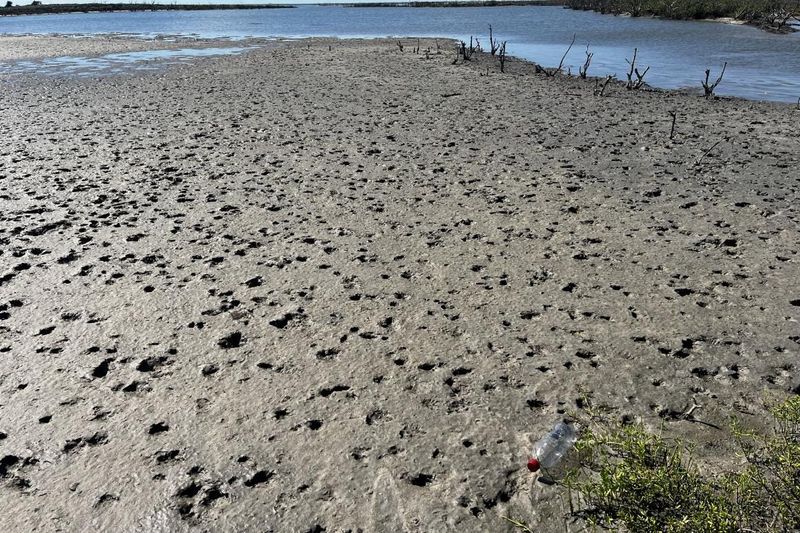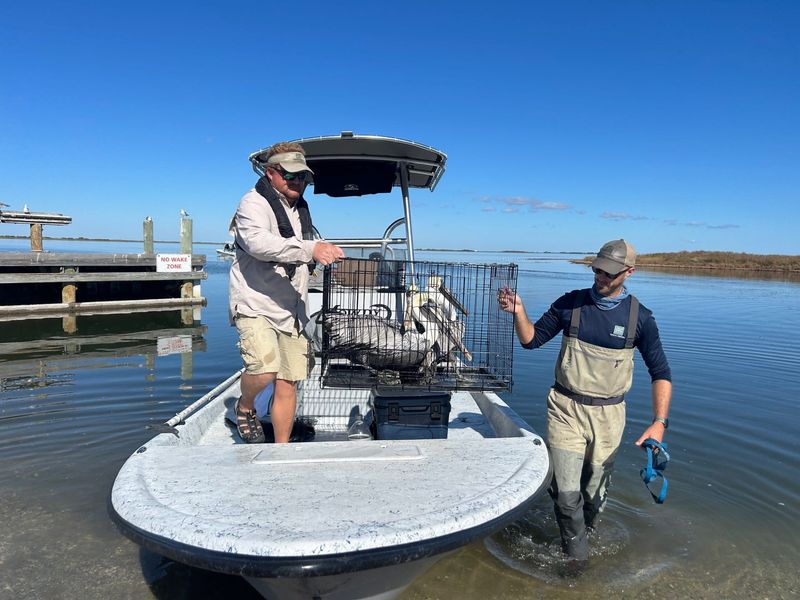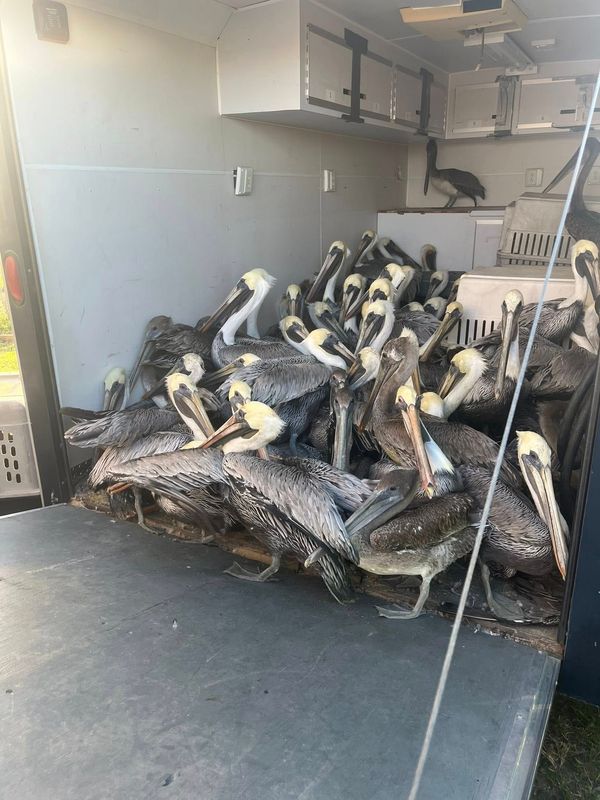(This story was updated to add a video and new information.)
Solid ice the size of golf balls and baseballs rained down on the Coastal Bend on Nov. 1, shattering windows, stripping vegetation from the trees and damaging roofs through Taft, Gregory, Portland, Ingleside, Beeville, San Diego and north of Baffin Bay.

Sounds scary, right? Now imagine you’re a 9-pound bird with hollow bones, hit by even one hailstone.
More than 1,600 pelicans and 400 other birds, including threatened reddish egret, red knot and piping plover, were killed or severely injured on rookery islands in Corpus Christi Bay and near Baffin Bay, according to a news release from Texas A&M University’s Harte Research Institute. Other birds affected include great blue herons, laughing gulls, ring-billed gulls, royal terns, Forster’s terns, sanderlings, ruddy turnstones, double-crusted cormorants and belted kingfishers.
It was the largest reported avian mortality event from a hailstorm in North America in decades, the news release said.
In total, the Amos Rehabilitation Keep took in 417 living birds, Amos Rehabilitation Keep staff supervisor Andrew Orgill said on Nov. 14, two weeks after the storms. Many showed dramatic progress, and some birds have already been released at Wilson’s Cut adjacent to Shamrock Island. The first 10 birds released on Nov. 13 were seen plunge-diving, feeding and flying strong.
Many of the birds died on Shamrock Island, a critical habitat for colonial birds just west of Mustang Island. The rookery island, owned by The Nature Conservancy, is one of the most productive waterbird nesting islands on the Texas coast and the largest in Corpus Christi Bay.
It isn’t breeding season, so no nests were impacted, but countless birds were roosting on Shamrock Island the night of Nov. 1. It’s a safe roost spot because the island has no mammalian predators, said Sonia Najera, director of landscape initiatives for The Nature Conservancy.
The storm was narrow, but it passed right over the southern stretch of the island, which is one of the most popular roosting locations due to large sandbars.
“Pock marks in the mud left behind by hailstones indicated their size, and photos of mudflats showed roughly a foot between impact marks, meaning medium and large birds had little chance of escaping unscathed,” Dale Gawlik, Harte Research Institute endowed chair for conservation and biodiversity, said in a news release.
After the storm, a fisherman near Shamrock Island reported seeing several injured birds to the Coastal Bend Bays & Estuaries Program. When rescuers from the University of Texas Marine Science Institute’s Amos Rehabilitation Keep arrived at the island, they found devastation.
“We found those, and then we found hundreds more,” Orgill said.
Partners including the Harte Research Institute, Amos Rehabilitation Keep, The Nature Conservancy, the Coastal Bend Bays & Estuaries Program, the Texas Parks and Wildlife Department, Texas Sealife Center, Gulf Coast Wildlife Rescue, the Texas State Aquarium and Wings Rescue Center. They mobilized to assess the damage and rescue birds if possible.
“It’s a difficult time to see so many dead animals,” Najera said. “Everyone came together and rallied.”
For days, rescuers triaged birds with head traumas, eye injuries and fractured wings, Orgill said.
Many were too far gone for rehabilitation, Orgill said. Ending their suffering was all that could be done.
But some of the birds do have a chance, Orgill said.
“Hopefully, we’ll be able to get a lot of the birds back out into the wild,” Orgill said.
Najera said that it’s important to protect Texas’ rookery islands, giving birds the space they need to thrive.
“This year is going to be a really important period for the brown pelican just because so much of the breeding population has been removed just because of this one single event,” Najera said.
The breeding season for colonial waterbirds will begin in January and February. Concerns like erosion and sea level rise remain threats for birds.
“Our shorelines are eroding; the landmass is getting smaller and smaller,” Najera said. “Roost sites and nesting sites are getting harder to protect.”
The Harte Research Institute used drones to assess islands, visiting all of the islands in the storm’s path.
“Because hailstorms are much rarer than rainstorms, climate scientists are less certain of how climate change is affecting the number of hailstorms,” Gawlik said in the news release.
“However, there is agreement among studies worldwide that human-caused climate change is allowing for larger hail. This really matters to birds because had the hail been the size of a pea we would not have seen the kind of injuries these birds suffered.”
This article originally appeared on Corpus Christi Caller Times: ‘So many dead animals.’ Efforts ongoing to save hundreds of birds after hail
Reporting by Olivia Garrett, Corpus Christi Caller Times / Corpus Christi Caller Times
USA TODAY Network via Reuters Connect






